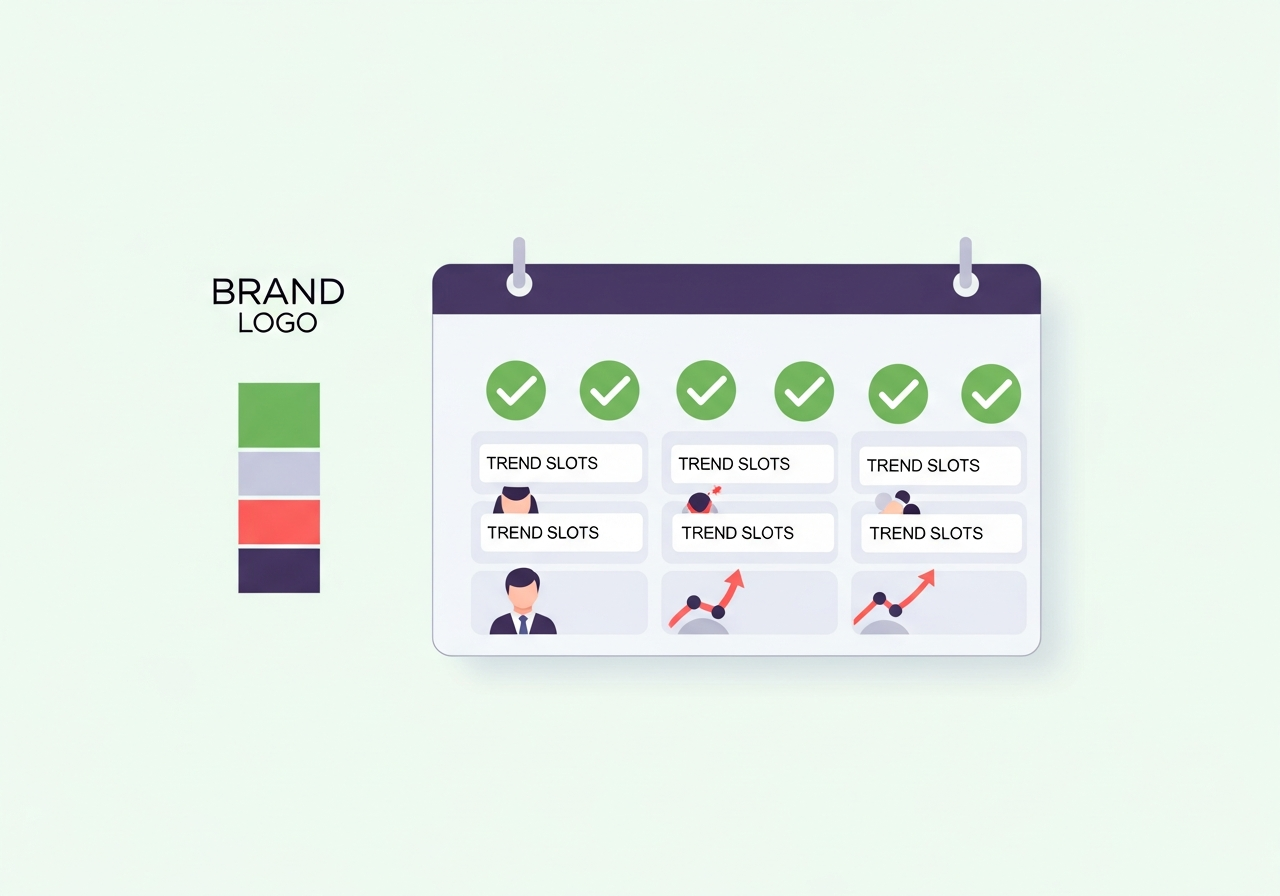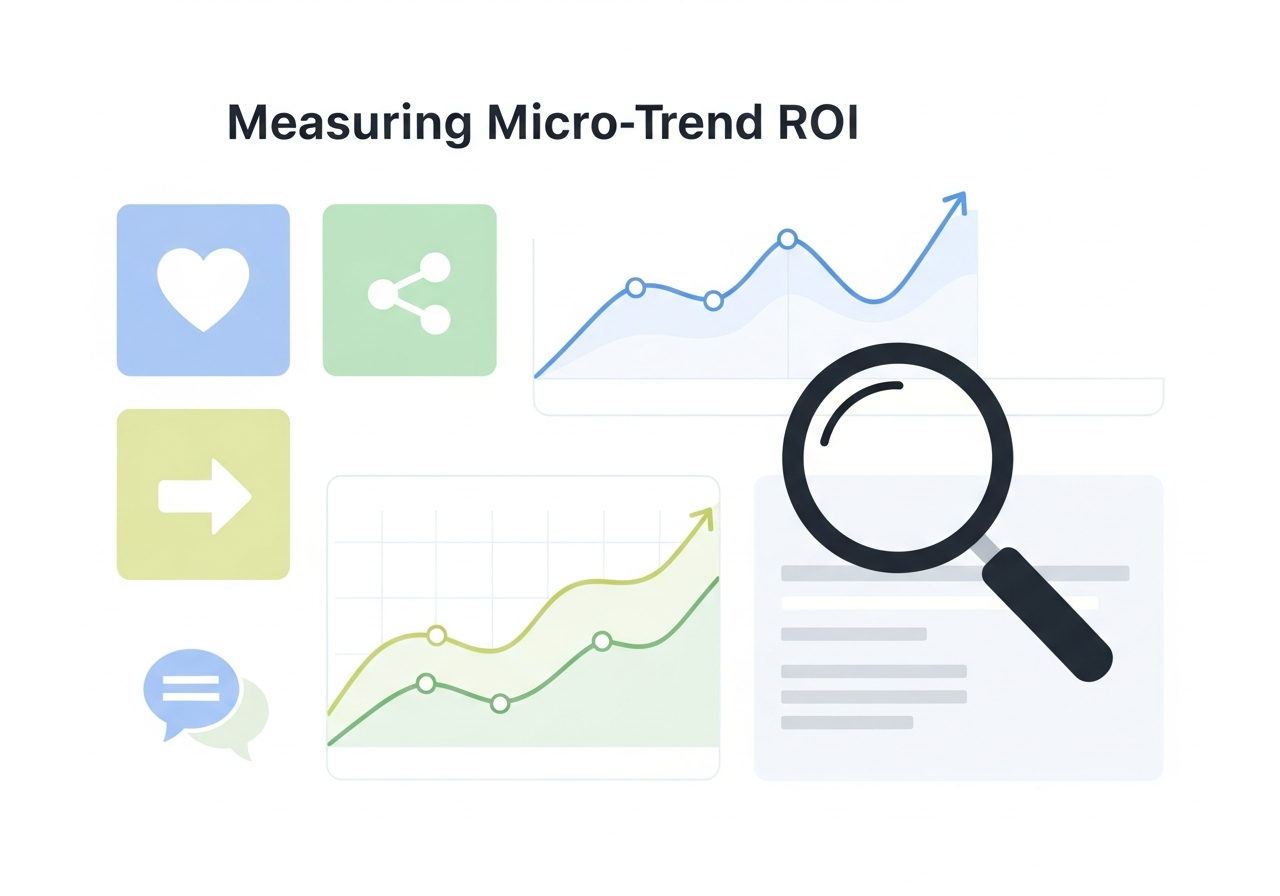
Micro-trend marketing leverages emerging, niche cultural moments to boost engagement and relevance. Brands identify trends via real-time data, test rapidly, and scale successful campaigns, balancing speed, creativity, and alignment to drive rapid growth and audience connection.
In today’s hyper-connected world, where the average person scrolls through hundreds of posts each day, capturing attention requires more than generic messaging—it demands cultural precision. A recent study by Gartner found that brands that adopt real-time trend monitoring achieve up to 30% higher engagement rates than those relying on quarterly content planning. Micro-trends—those fleeting, niche phenomena that erupt on social media, in subcultures, or among hyper-targeted demographics—offer a powerful opportunity to connect with audiences in the moment. Yet, they can vanish as quickly as they appear. To harness their potential, marketers need structured processes, advanced tools, and a mindset geared toward experimentation. This comprehensive guide will walk you through every step of mastering micro-trend marketing, from identifying emerging patterns to scaling successful campaigns across multiple channels.
What Are Micro-Trends?
Micro-trends are smaller-scale, niche patterns that gain rapid traction within a specific audience or platform before potentially expanding to a wider public. Unlike macro-trends—such as sustainability or mobile-first browsing—micro-trends live on the cutting edge of cultural shifts and can include anything from a new streetwear aesthetic on TikTok to a viral recipe hack on Instagram. Because they are fleeting and hyper-targeted, micro-trends demand quick identification and action to capture maximum impact.
For example, a sudden preference for pastel-colored drinkware on Pinterest or a slang phrase going viral on Twitter can qualify as a micro-trend. These trends can last anywhere from a few days to several weeks, making agility and data-driven decision-making essential to leverage them effectively. In contrast, macro-trends evolve over years and often require large-scale strategic shifts. Understanding this lifecycle difference is key to allocating the right level of resources and attention to micro-trend initiatives.
Benefits of Micro-Trend Marketing

- Increased Engagement: Content that taps into the latest micro-trends resonates with audiences more deeply, driving higher likes, shares, and comments.
- Enhanced Relevance: Brands that move quickly demonstrate authenticity and cultural awareness, positioning themselves as thought leaders.
- Lower Costs: Testing micro-trend content organically can be more cost-effective than large-scale campaigns, allowing for rapid iteration.
- Competitive Edge: Early adopters of emerging trends can gain a first-mover advantage before the market becomes saturated.
Beyond engagement and relevance, micro-trend marketing can fuel brand loyalty by showing customers that you’re listening to their interests in real time. It also yields valuable audience insights—tracking which trends resonate reveals deeper motivations and preferences that can inform broader marketing and product decisions.
Essential Tools for Trend Forecasting
Identifying micro-trends requires real-time data and robust analytical tools. Key platforms include:
- Social Listening Tools (e.g., Brandwatch, Sprout Social) for tracking brand mentions and consumer sentiment across channels.
- Google Trends and Exploding Topics to gauge search volume spikes and emerging search queries.
- TikTok Creative Center and Instagram Explore insights for monitoring viral content formats and song usage.
- Reddit Keyword Alerts to catch early signals in niche communities and subreddits.
Combining quantitative data with qualitative research—like influencer interviews or focus groups—creates a comprehensive view of upcoming trends. Emerging AI-driven analytics platforms can further enhance forecasting by predicting trend trajectories and sentiment fluctuations before they hit peak visibility.
Identifying Micro-Trends in Real-Time
- Set Up Automated Alerts: Create keyword and hashtag alerts so you’re notified the moment a trend starts to gain traction.
- Monitor Niche Communities: Join specialized forums, Discord servers, and Slack groups where early adopters congregate.
- Use Trend Dashboards: Build a centralized dashboard that pulls in metrics from social media, search, and e-commerce data sources.
- Engage with Influencers: Partner with micro-influencers who can provide firsthand insights on budding trends.
- Scan Industry Newsletters and RSS Feeds: Curated daily digests often surface emerging behaviors before they hit major platforms.
Additionally, cross-reference micro-trend signals with first-party data—such as email click patterns or on-site behavior—to validate the trend’s relevance to your unique audience. This dual approach of external and internal data ensures you invest in the right opportunities.
Integrating Micro-Trends into Your Marketing Strategy

Once you’ve identified a promising micro-trend, you need a streamlined process to test, refine, and scale your approach. Here’s how to weave micro-trends into your workflow:
- Rapid-Response Content Creation: Assemble a mini “SWAT team” of designers, copywriters, and social media managers for 24–48-hour sprints.
- Agile Editorial Calendars: Maintain a content calendar with placeholders for micro-trend experiments and conduct daily stand-ups to review performance.
- A/B Testing and Validation: Launch small-scale posts or ads to test messaging and creative variations, then double down on the winners.
- Omnichannel Amplification: Coordinate organic, paid, and influencer tactics to amplify successful trend-driven content across platforms.
This process aligns closely with modern viral content strategies, where speed, shareability, and emotional resonance are essential for breaking through noisy feeds. By building your micro-trend playbook around these principles, you maximize the chances of content taking off quickly while still maintaining brand alignment.
Because micro-trend campaigns require rapid resource allocation, establish clear governance and budget guardrails to prevent scope creep. Document your decision-making criteria and performance thresholds so stakeholders can review and approve new experiments quickly, keeping time-to-market measured in hours rather than weeks.
Leveraging Influencer Partnerships for Micro-Trends
Influencers are often the first to spot emerging trends within niche communities. Partnering with them can help brands gain credibility and amplify content quickly. Here’s how to leverage influencer collaborations effectively:
-
Identify the Right Influencers:
-
Micro-influencers (5K–50K followers) and nano-influencers (1K–5K followers) often have higher engagement rates within tight-knit communities.
-
Focus on influencers whose audience aligns closely with your target demographic.
-
-
Early Trend Spotting:
-
Use influencer insights to discover rising topics, hashtags, and viral formats before they hit mainstream attention.
-
Monitor the type of content influencers post that consistently drives engagement.
-
-
Content Co-Creation:
-
Allow influencers creative freedom to produce authentic, trend-driven content that feels natural to their audience.
-
Encourage storytelling that aligns with your brand values while tapping into trending formats (e.g., TikTok challenges, Instagram Reels, AR filters).
-
-
Quick Campaign Execution:
-
Launch short-term, agile influencer campaigns to capitalize on trends while they’re hot.
-
Set clear KPIs like engagement rate, reach, conversions, or app downloads to measure success.
-
-
Amplification Across Channels:
-
Repurpose influencer content across your brand’s social platforms for maximum visibility.
-
Combine paid promotion with organic influencer content to extend reach.
-
Balancing Speed with Brand Consistency

Micro-trends are fast-moving, but brands must maintain a coherent identity to avoid confusion or backlash. Here’s how to act quickly without sacrificing authenticity:
-
Trend Evaluation Matrix:
-
Relevance: Does the trend resonate with your target audience?
-
Brand Fit: Does it align with your mission, values, and tone?
-
ROI Potential: Will it generate measurable engagement, traffic, or sales?
-
Risk Assessment: Could participating in this trend harm your brand reputation?
-
-
Content Approval Workflow:
-
Streamline decision-making by establishing pre-approved templates and creative guidelines.
-
Empower small, cross-functional teams to approve trend content within hours, not weeks.
-
-
Maintain Consistent Messaging:
-
Ensure micro-trend content still reflects your brand voice, visual identity, and positioning.
-
Avoid forcing participation in trends that feel irrelevant or inauthentic.
-
-
Flexible Planning:
-
Keep “trend slots” in your editorial calendar for rapid content deployment.
-
Rotate responsibilities among team members to prevent burnout while maintaining a quick turnaround.
-
Case Studies: Brands Winning with Micro-Trend Marketing
Fashion Retailer X spotted a surge in demand for transparent handbags after tracking a specialized Instagram hashtag. Within 48 hours, they launched a limited-edition line featuring user-generated styling photos. The campaign saw a 35% lift in engagement and sold out inventory in under a week.
Food Delivery Brand Y noticed a viral trend around home smoothie bowls on TikTok. They partnered with a local fitness micro-influencer to showcase quick “build-your-bowl” recipes, driving a 22% increase in new app downloads and a 15% boost in average order value.
Tech Startup Z identified an emerging craze for augmented reality filters on Instagram Reels. They developed a custom AR effect that aligned with their product’s aesthetic and launched it with an influencer challenge. The filter generated over 1 million uses in a week and increased brand mentions by 40% across social platforms.
These success stories underscore the critical role of speed, strategic partnerships, and creative finesse when executing micro-trend campaigns.
Key Challenges and How to Overcome Them
Despite their appeal, micro-trend campaigns present unique challenges that must be managed to ensure success. Common pitfalls include:
- False Positives: Not every spike represents a sustainable trend. Overreacting to random data can waste resources.
- Brand Misalignment: Chasing trends that contradict your core values can confuse or alienate your audience.
- Resource Strain: Rapid sprints can overwhelm teams without proper governance, leading to burnout.
To overcome these challenges, establish clear criteria for trend selection—such as minimum growth rates, audience relevance, and alignment with brand voice. Build time buffers and rotate team responsibilities to prevent fatigue. Finally, conduct post-mortem analyses after each experiment to capture lessons learned and refine your approach.
Measuring ROI and Long-Term Impact of Micro-Trends

While micro-trends generate immediate buzz, brands need to understand their lasting value. Metrics and insights help refine future campaigns:
-
Engagement Metrics:
-
Likes, shares, comments, saves, and video views indicate audience resonance.
-
Track growth rate rather than just absolute numbers to spot viral momentum.
-
-
Conversion Metrics:
-
Link social campaigns to website traffic, app downloads, sign-ups, or sales.
-
Use UTM codes and attribution models to track the impact of trend-driven content.
-
-
Brand Awareness and Sentiment:
-
Monitor brand mentions, hashtags, and discussions across platforms.
-
Use sentiment analysis to understand audience perception and long-term impact.
-
-
Trend Performance Analysis:
-
Conduct post-mortems to identify which micro-trends performed best and why.
-
Extract insights such as preferred content formats, messaging styles, or influencer types.
-
-
Integration into Broader Strategy:
-
Feed learnings from micro-trend campaigns into macro-level content strategies.
-
Identify recurring patterns to proactively anticipate future trends, improving agility and ROI.
-
Conclusion
In a landscape where cultural moments can emerge and evaporate overnight, mastering micro-trend marketing is no longer optional—it’s essential for brands that want to stay relevant and resonate with their audiences. By leveraging cutting-edge tools for trend forecasting, establishing agile workflows for rapid content creation, and drawing inspiration from real-world case studies, you can transform fleeting cultural signals into lasting brand value.
Follow this roadmap to put micro-trend marketing into action:
- Set up automated alerts and dashboards to monitor multiple data sources in real time.
- Assemble a cross-functional rapid-response team with clear governance and budget guardrails.
- Pilot micro-trend experiments on low-cost channels and validate with A/B testing.
- Scale successful campaigns with paid, earned, and owned amplification.
- Analyze results and integrate insights into your broader marketing and product roadmap.
By starting small, testing quickly, and iterating continuously, you’ll keep your brand one step ahead of the next cultural moment—no matter how fleeting it may be.
FAQ: Micro-Trend Marketing
1. What is micro-trend marketing?
Micro-trend marketing involves spotting and leveraging short-lived, niche trends in real time to create highly relevant content that engages specific audiences quickly.
2. How are micro-trends different from macro-trends?
Macro-trends evolve over months or years and impact broad markets, while micro-trends are fast-moving, niche, and often platform-specific, requiring immediate action to capitalize on them.
3. Why should brands focus on micro-trends?
Micro-trends help increase engagement, enhance brand relevance, lower marketing costs, and provide a competitive edge by demonstrating cultural awareness and agility.
4. Which tools help identify micro-trends?
Key tools include social listening platforms (Brandwatch, Sprout Social), Google Trends, TikTok Creative Center, Instagram Explore insights, Reddit alerts, and AI-driven analytics for trend forecasting.
5. How can brands integrate micro-trends into their marketing strategy?
Brands can create rapid-response content, maintain agile editorial calendars, run small-scale tests (A/B testing), and amplify successful trends across multiple channels, including organic, paid, and influencer campaigns.
6. What are the main challenges in micro-trend marketing?
Common challenges include false positives (trends that don’t last), brand misalignment, and resource strain from rapid campaigns. Clear selection criteria, governance, and team rotation help overcome these issues.
7. Can small businesses leverage micro-trends?
Yes! Even small brands can spot relevant niche trends, experiment with low-cost channels, and scale successful campaigns to gain engagement without heavy budgets.
8. How do I measure success in micro-trend marketing?
Track engagement metrics, social mentions, app downloads, sales impact, and conversion rates. Post-campaign analysis helps refine future micro-trend experiments.
9. How fast do I need to act on a micro-trend?
Micro-trends can last from a few days to a few weeks, so speed is crucial. Rapid-response teams and pre-established workflows ensure you capitalize on trends before they fade.
10. Are there risks in chasing trends?
Yes. Chasing irrelevant or misaligned trends can confuse your audience and harm brand credibility. Always evaluate trends for audience fit, brand voice alignment, and potential ROI before investing resources.
Learn more about: The Dark Side of Viral Marketing: Risks No One Talks About










Leave a Reply